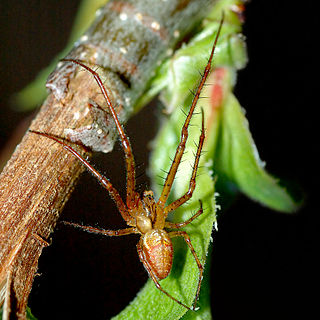
Long-jawed orb weavers or long jawed spiders (Tetragnathidae) are a family of araneomorph spiders first described by Anton Menge in 1866. They have elongated bodies, legs, and chelicerae, and build small orb webs with an open hub with few, wide-set radii and spirals with no signal line or retreat. Some species are often found in long vegetation near water.
Sinocyclocheilus is a genus of freshwater fish in the family Cyprinidae that is endemic to Guangxi, Guizhou and Yunnan in China. Almost all of its species live in or around caves and most of these have adaptions typical of cavefish such as a lack of scales, lack of pigmentation and reduced eyes. Several species have an unusual hunchbacked appearance and some of the cave-dwellers have a "horn" on the back, the function of which is unclear. In contrast, the Sinocyclocheilus species that live aboveground, as well as a few found underground, show no clear cavefish adaptions. They are relatively small fish reaching up to 23 cm (9.1 in) in length. The individual species have small ranges and populations, leading to the status of most of the evaluated species as threatened. Many species populations in the genus have yet to be evaluated by the IUCN.

Triplophysa is a genus of fish in the family Nemacheilidae found mainly in and around the Qinghai-Tibet Plateau in China, as well as inland waters of the larger part of central Asia. They can be distinguished from other genera of Nemacheilidae by marked sexual dimorphism, including the development of nuptial tubercles on breeding males. Currently, the genus is a mixed assemblage of species. Some lineages have been identified and treated as subgenera, but as Wikipedia follows Fishbase for fish species all but Hedinichthys have been treated as subgenera in Wikipedia, although Kottelat in his revision of the loaches did recognise them as valid. FishBase, however, includes these in Triplophysa without specifying subgenera and treats the names given by Kottelat as synonyms.
The Hekou Group is a geological group in Gansu Province, China. It is Early Cretaceous in age. Many dinosaur fossils have been recovered from the Hekou Group, including iguanodonts, large sauropods, and armored dinosaurs. Fossil eggs are rare, but one oogenus, Polyclonoolithus, was discovered in the Hekou Group. Extensive fossil tracks belonging to pterosaurs and dinosaurs have also been described. The group spans the Valanginian to Albian and can be subdivided into four formations.

Parasteatoda is a genus of comb-footed spiders that was first described by Allan Frost Archer in 1946. The name is a combination of the Ancient Greek "para-" (παρά), meaning "near" or "next to", and the theridiid genus Steatoda. The Japanese name for this genus is O-himegumo zoku.
Cāng zhú, also known as black atractylodes rhizome or Rhizoma Atractylodes, is a Chinese herbal medicine. It is the dried rhizome of Atractylodes lancea (Thunb.) DC., synonyms Atractylodes chinensis (DC.) Koidz, and Atractylodes japonica Koidz. The medicine is distinguished from bái zhú, which is typically cultivated, whereas cāng zhú more often tends to be collected from the wild. It is believed that the distinction between cāng zhú and bái zhú emerged in relatively modern times; a single drug "zhú" described in the Shen nong ben cao jing probably included many Atractylodes species.
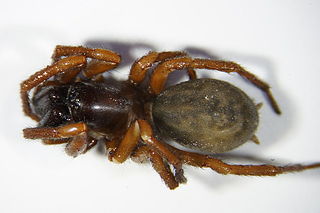
Coelotes is a genus of funnel weavers first described by John Blackwall in 1841. A large number of species are found throughout Europe and Asia.

Allagelena is a genus of Asian funnel weavers first described by Z. S. Zhang, Ming-Sheng Zhu & D. X. Song in 2006.
Utivarachna is a genus of Asian araneomorph spiders in the family Trachelidae first described by Kyukichi Kishida in 1940. It was largely ignored until Christa L. Deeleman-Reinhold revised the sac and ground spiders in 2001, transferring some species from Trachelas and adding several new ones. The genus was further expanded in 2014 and 2015.

Tylorida is a genus of long-jawed orb-weavers that was first described by Eugène Louis Simon in 1894.
Dianleucauge is a monotypic genus of Chinese long-jawed orb-weavers containing the single species, Dianleucauge deelemanae. It was first described by D. X. Song & M. S. Zhu in 1994, and is found in China.
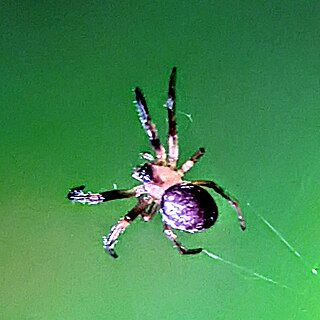
Guizygiella is a genus of Asian long-jawed orb-weavers that was first described by M. S. Zhu, J. P. Kim & D. X. Song in 1997.
Nanningia is a monotypic genus of Chinese long-jawed orb-weavers containing the single species, Nanningia zhangi. It was first described by M. S. Zhu, J. P. Kim & D. X. Song in 1997, and has only been found in China.
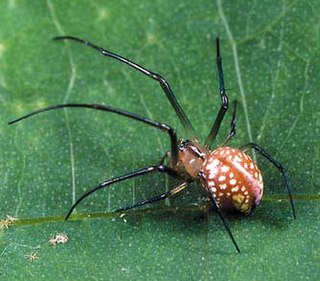
Okileucauge is a genus of East Asian long-jawed orb-weavers that was first described by A. Tanikawa in 2001.

Orsinome is a genus of long-jawed orb-weavers that was first described by Tamerlan Thorell in 1890. It is included in the Nanometa clade, defined by nine morphological synapomorphies, along with Eryciniolia and Nanometa.
Takayus is a genus of Asian comb-footed spiders that was first described by H. Yoshida in 2001.
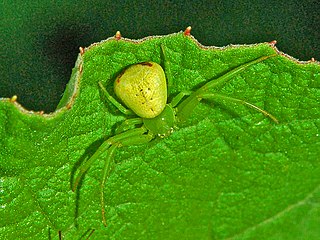
Ebrechtella is a genus of crab spiders that was first described by Friedrich Dahl in 1907.
Troglocoelotes is a genus of east Asian funnel weavers. It was first described by B. Li, Z. Zhao and C. T. Zhang in 2019, and it has only been found in China.
Orientattus is a genus of Asian jumping spiders erected by John Caleb in 2020. It is placed in the tribe Plexippini, within the Salticoida clade of Salticinae. In 2018 and 2019, a species found in Sri Lanka and India was placed in the otherwise African genus Schenkelia under the name "Schenkelia aurantia", however, this species differed significantly from the type species of the genus Schenkelia. Three other species, placed in different genera, were found to resemble Schenkelia aurantia, and these were all combined to create the genus, Orientattus.









